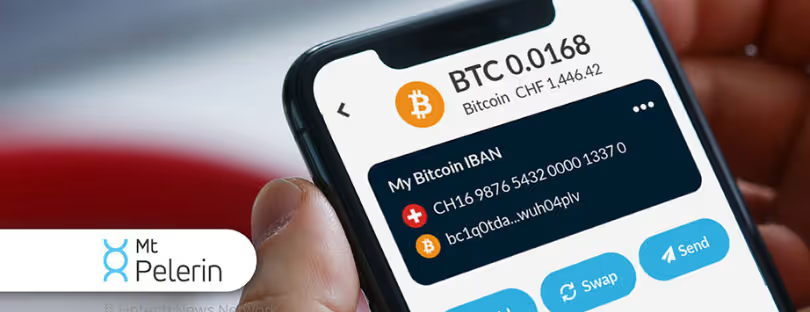
5G Comes to Budapest’s Subway for Telekom users
In today’s fast-paced world, staying connected is more important than ever. And when it comes to public transport, having reliable internet access can make a significant difference in our daily commutes. Recently, Magyar Telekom announced a significant breakthrough that has many Budapest residents (and visitors) buzzing with excitement: Budapest Metro got 5G connection.
Let’s dive into how Telekom is reshaping the travel experience in the city by bringing 5G technology to every subway line in Budapest.
A New Era for Budapest’s Subway
What’s New with the Budapest Metro 5G Rollout?
Starting July 1, 2024, Telekom flipped the switch on 5G connectivity across all lines of the Budapest metro. Just imagine streaming your favorite show or video calling a friend while hurtling through the underground—now that’s a game changer!
Telekom’s rollout didn’t happen overnight. Here’s a timeline of key dates:
- July 1, 2024: Initiation of 5G service on the public-access parts of the metro.
- Mid-August 2024: M2 line goes live with 5G.
- End of September 2024: M4 line added.
- November 11, 2024: M3 line finally equipped with 5G.
Why This Matters?
This phased rollout isn’t just about upgrading technology. It’s aimed at fulfilling the increasing demand for mobile data and enhancing the user experience in one of Europe’s busiest metro systems. With 5G, commuters can stay connected, entertained, and informed on the go.
The Driving Force Behind Network Modernization
Why Upgrade?
Telekom’s decision to modernize its network stems from the rapid growth in mobile data usage among customers. Recent studies show that mobile data traffic in the subway has doubled! That’s like the busy buzz of a European city condensed into the confined space of a train.
Program Highlights
Telekom’s modernization program encompasses:
- Overhauling base stations.
- Upgrading both active and passive radio technical devices.
- Investing in robust infrastructure for efficient service delivery.
Achievements in 2022
In 2022 alone, nearly 30% of mobile stations were modernized. By the end of that year, 60% of base stations had been successfully upgraded—enhancing capacity and reliability for carried traffic.
New Frequencies, New Possibilities
Telekom’s 5G operates on several frequencies:
- 700MHz
- 2100MHz
- 3600MHz
The primary focus is leveraging 700MHz for coverage across the metro, ensuring a robust and reliable connection, even below ground.
5G Beyond the Metro
On June 1, 2023, Telekom also extended 5G access beyond the city, reaching various rural towns and popular lakes like Lake Balaton and Lake Tisza.
How Are Commuters Experience This Upgrade?
Real-time Data Usage Insights
If you’re curious about how commuters are using this new service, think of the busiest station—Nyugati pályaudvar. With data traffic comparable to that of an entire city of 20,000 to 30,000 inhabitants, it’s a hub of activity!
Impact on User Experience
Since activating 5G, both voice and data traffic have seen notable increases among Metro users. Imagine getting on a subway packed with fellow commuters, all of whom are enjoying uninterrupted video streaming or high-speed browsing.
Staying Connected: What Do You Need?
To enjoy the benefits of 5G, here’s what you need:
- A 5G-capable device.
- An appropriate mobile internet service package.
- A SIM card that is at least 4G-capable.
Free 5G Access
Magyar Telekom ensures customers can access 5G free of charge once they fulfill the requirements. It’s a seamless upgrade for its existing customers that is both user-friendly and efficient.
Looking Ahead: What’s in Store for Telekom?
As Telekom solidifies its 5G infrastructure in Budapest, we can expect even more innovations. The promise of seamless connectivity may soon spread beyond the metro to every corner of the city, enhancing not just daily commutes but the overall quality of life in Budapest.
A Connected Future
We’re on the verge of next-level connectivity, where our daily activities blend seamlessly with technology. Think of how 5G can enhance smart city initiatives, digital entertainment, and even emergency services. The potential is limitless!
About Budapest Metro
Budapest Metro has four lines and is relatively easy to use. Three of the four metro lines intersect only once, at Deák Ferenc Square.
Tips to keep in mind before using the Budapest Metro:
- You must validate your ticket in any of the transport company’s orange validating machines before you get on the metro.
- A single ticket is only valid for a one-way uninterrupted ride. This means that you may not change lines. You should validate another single ticket if you need to take another metro line. Moreover, a one-journey is valid for 80 minutes (120 minutes at night-time).
Information on the various lines and most significant metro stations:
Line 1 (yellow line)
Line 1 runs from Vörösmarty tér to Mexikói út. This line stops at numerous landmarks and museums, making it very useful for tourists.
It runs through Andrássy Avenue and stops at the Hungarian State Opera House, the Oktogon Intersection, Heroes’ Square and City Park. It also stops very near the Chain Bridge.
The Metro line 1 is one of the easiest lines to take since it is not very deep and; therefore, you will not have to walk down many stairs. In addition, its stations are curiously decorated.
Line 2 (red line)
It crosses Budapest from Buda’s Déli Pályaudvar (Déli Railway Station) to Pest’s Örs vezér Square. The most useful stations for tourists are Kossuth Square, where the Hungarian Parliament is located, Batthyány Square, which is the Fisherman’s Bastion metro stop and Astoria, the closest station to the Great Synagogue.
Line 3 (blue line)
You will find this route useful if you take the bus 200E from the Airport to the city centre. The bus’s final destination is Köbánya-Kispest, which is the first Line 3 metro station.
Line 3 also stops at the Great Market Hall (Kálvin Tér).
Line 4 (green line)
Opened in 2014, the metro line 4 runs for 4 miles (7 kilometres). It connects the two main railway stations in the city: Keleti Railway Station and Kelenföld Railway Station.
Schedule
Budapest Metro opens every day at 4:30 am and runs until 11 pm. The trains pass every 2 to 15 minutes depending on the time of day.
Conclusion: A Milestone for Metropolis Connectivity
In conclusion, the rollout of 5G in Budapest ‘s metro marks a significant leap forward for Telekom and its customers. With enhanced connectivity, users can now enjoy a seamless commute filled with entertainment, productivity, and a sense of being networked, no matter where they are in the underground. As we watch this development unfold, it’s clear that Telekom is not just keeping pace with global trends, but actively shaping the future of connectivity in Hungary.









